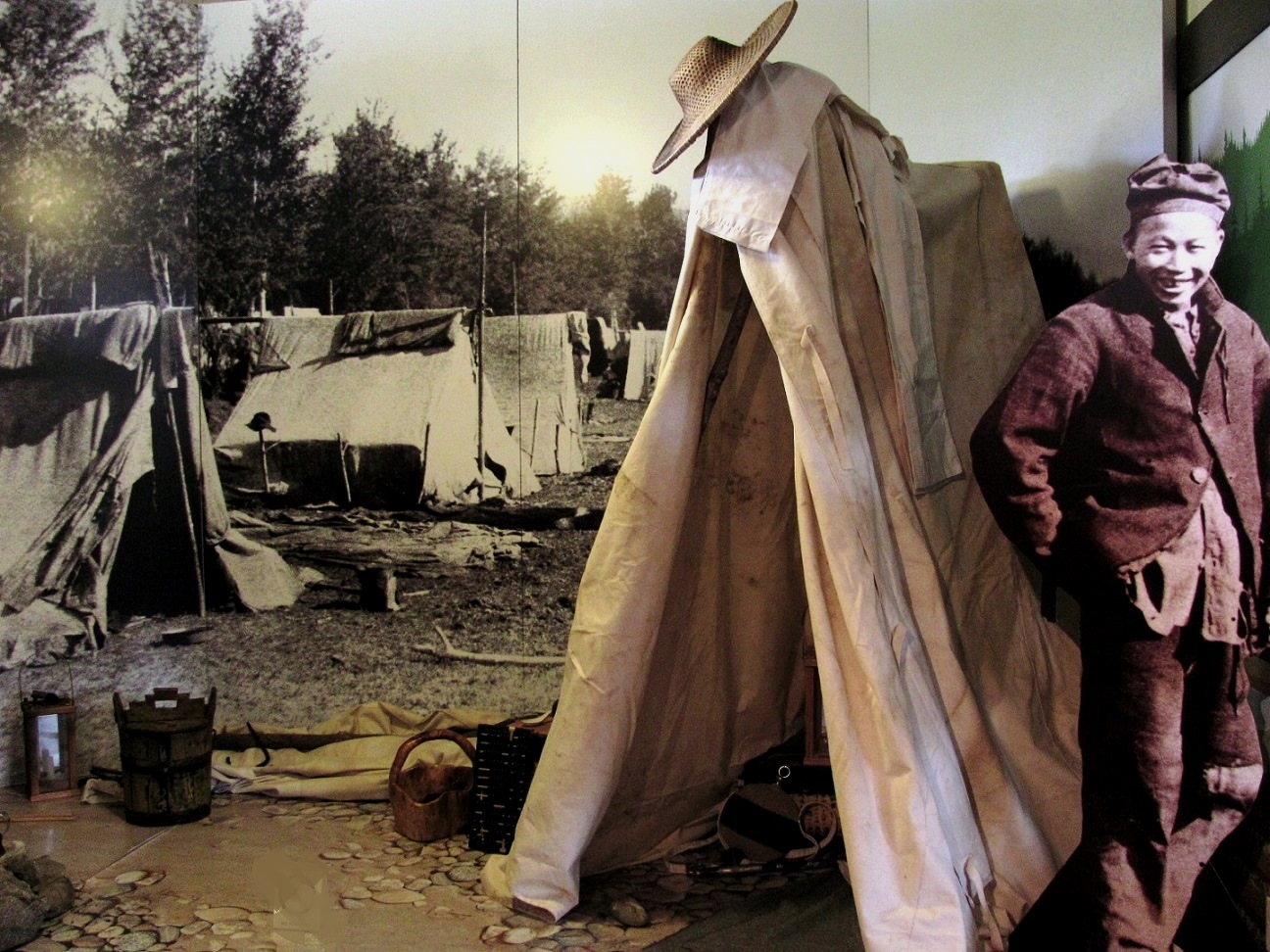Chinese Legacy Recognized by Port Moody
In 2012, I was invited several days after a travelling heritage exhibit at the Port Moody Railway Museum was to open, to attend a curated event and ceremony for members.
The background information provided was so interesting I decided to preview the public exhibit being created and circulated by the Revelstoke Railway Museum,.
The exhibit: Chinese Legacies: Building the Canadian Pacific Railway, explored the deplorable treatment of the estimated 15,000 Chinese labourers who contributed to the construction of the Canadian Pacific Railway (CPR) mainline from Craigellachie to Port Moody, the home of the CPR’s original western terminus.
As sordid as much of it is, the Port Moody connection to the Chinese railway workers, and their contributions, is an integral part of our local and national history.
I learned that an estimated 600 to 2,200 Chinese immigrant workers sadly lost their lives in efforts to help build the CPR, and the poor record keeping of the day was a testament to the way they were treated.
On July 4, 1886 with about 150 passengers, the first trans-continental train arrived from Montreal.
Having successfully completed the CPR, and having endured the extreme conditions, starvation, disease, sub-standard wages, and high-risk labour, exploited Chinese immigrant survivors in the thousands were left unemployed and impoverished.
The period between 1880 and 1885 was recounted in the exhibit, and included a diorama of a typical Chinese worker’s campsite, a slide show of historical photos, and original artifacts such as coins, games, and incense burners, some from the Port Moody Station Museum collection.
The exhibit portrayed the horrendous difficulties that the Chinese workers faced daily, and Canada’s response was shameful: an expensive head tax, personal attacks, and a great deal of discrimination.
Unemployed Chinese workers eventually started finding employment in communities along the CPR, where they worked mainly as cooks, servants, laundrymen, and laborers, and forged their own cultural identities and inheritance.
The Chinese resilience and perseverance in Canada is remarkable and speaks of our national story.
Chinese-Canadians fought for Canadian freedom in WWll and were finally granted the right to vote in Canada in the 1947 elections; paying reparations was a more recent acknowledgement.
All Canadians should now know the difference between tolerance and acceptance, and as we enjoy and celebrate our rich multicultural Canadian society, we must also recognize the Chinese-Canadian community for their nation building contributions. Xie xie.

